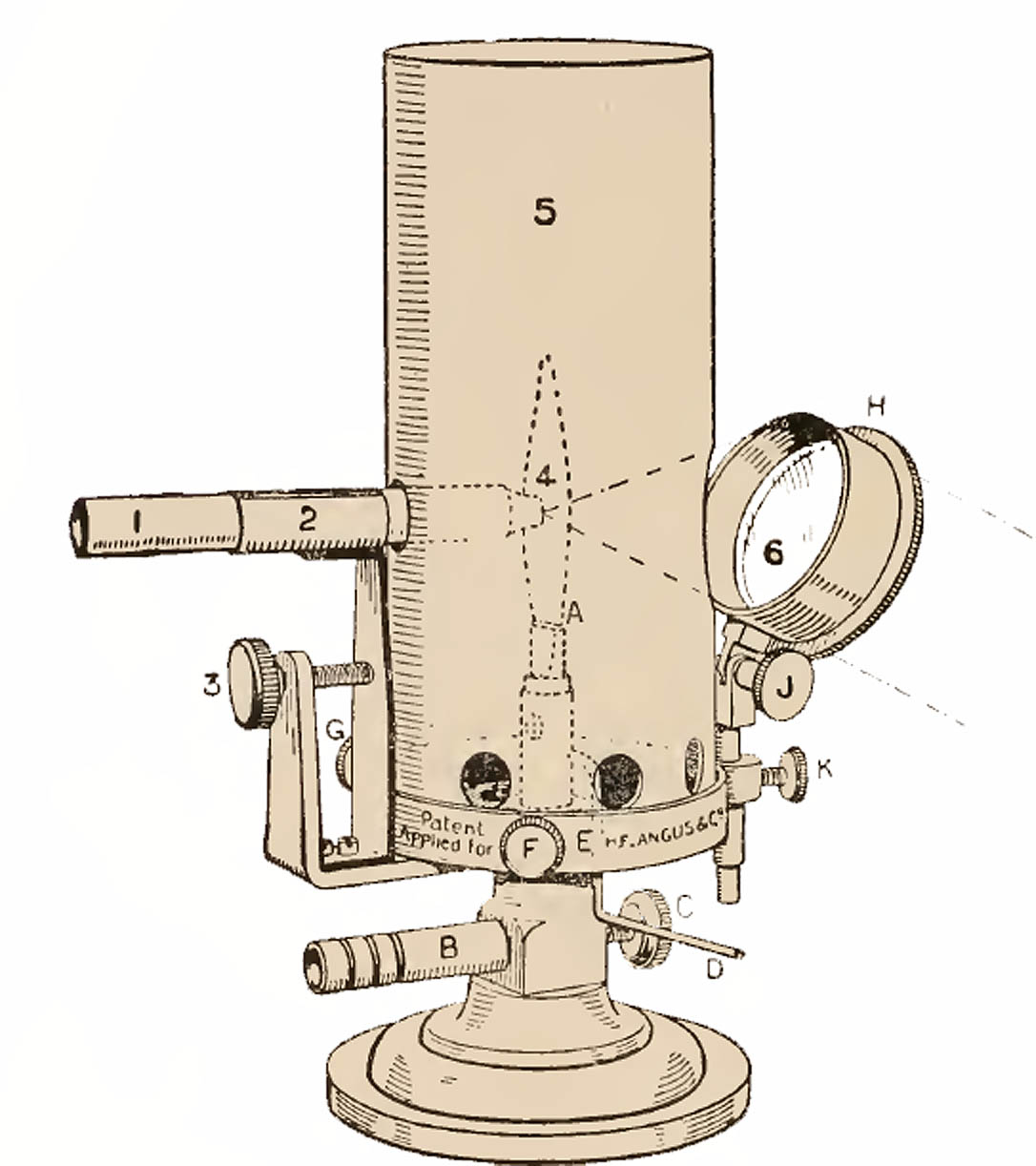GAS MICROSCOPE LAMP
MAKER: H.F. ANGUS & Co
MODEL:J.E. BARNARD'S MICROSCOPE LAMP
c.1918
SIGNED:H.F. Angus & Co Patent
Please Click On Any Picture for a Larger Version
DESCRIPTION:

This is a gas-powered lamp designed by C.E. Barnard, a famous microphotographer of the early 20th century. As anyone who has used a gas-burning stove knows, gas flames produce a lot of heat but not much light on their own. This device produced a bright light using a mantle# made of 95-99% thorium oxide and 1-5% cesium oxide which produced a bright white light when heated by the Bunsen burner. The light source was about 5 mm across when in use. The various parts are shown in the accompanying figure from 1918. It could be powered by gas like an ordinary Bunsen burner, or by pressurized methylated spirits*
1 is the mantle rod, 2 is the sleeve that grips it.
3 is a knob serving as a fine adjustment of the thorium rod to center it properly over the flame. B is the inlet for gas. C is the valve adjusting the gas flow rate. D is the lever adjusting how much air flows around the flame. K and J are clamps to hold the condensing lens (6), held by the spring metal enclosure, H, in position. F and G hold the chimney (5) in place. All the controls on this lamp are working.
*Methylated spirits were composed of ethyl alcohol to which was added 5 to 10% methanol to make it poisonous, and pyridine, a foul tasting substance, along with a purple dye. Today we call this denatured alcohol, and it is now colorless and without pyridine added.
#A mantle is a part of a gas lamp that when heated by the gas flame emits a strong light. In this case it was made of thorium and cesium but other types of mantles were used over the years, including those made of wire screens impregnated with rare earth elements.
The instrument is complete and likely functional, though of course it lacks the (radioactive!) thorium mantle(1) that would fit in the cylinder (2). In my example, a hollow aluminum tube is in place where the thorium-cesium rod would be.
HISTORY OF THE GAS ILLUMINANT:
Over the years, as described in more detail on the lamp history page, various types of illuminating sources were used for microscopy. The oldest included a white cloud in the sky, various types of candles, and oil lamps. Oil lamps were certainly the most popular up until WWII when electricity became readily available. For photography, a brighter light source was required, and various types of illuminants were used, including sunlight (dangerous, could cause blindness, required a heliostat), gas lamps such as the one one this page, and, as electricity became available other types including carbon-arc lamps, nernst lamps, mercury varpor lamps, high wattage incandescent lamps, and of course now LED lamps. Gas lamps were never the most popular type, but were used for a number of years, yet very few seem to have survived.
